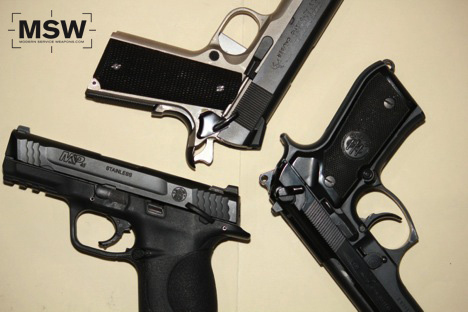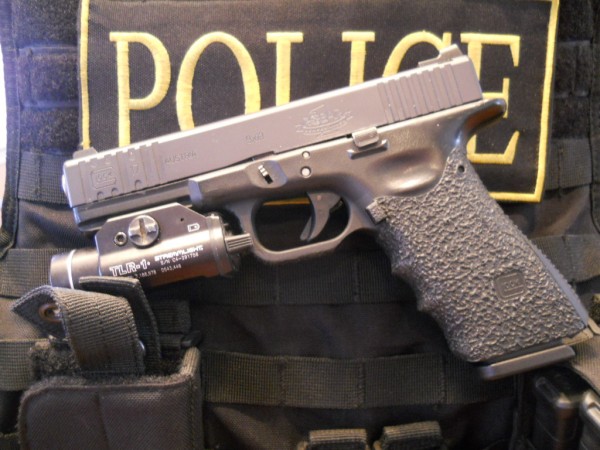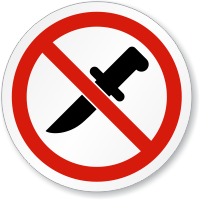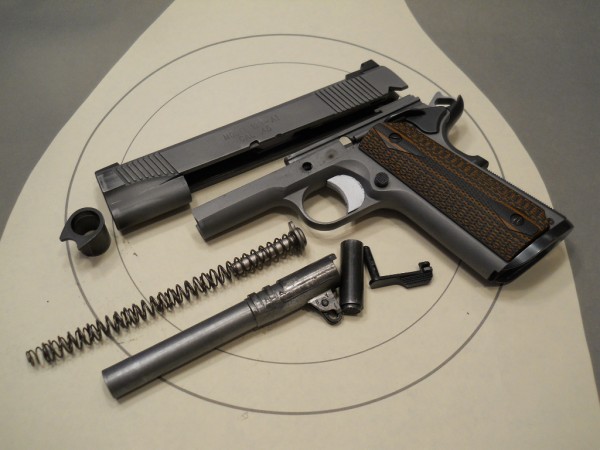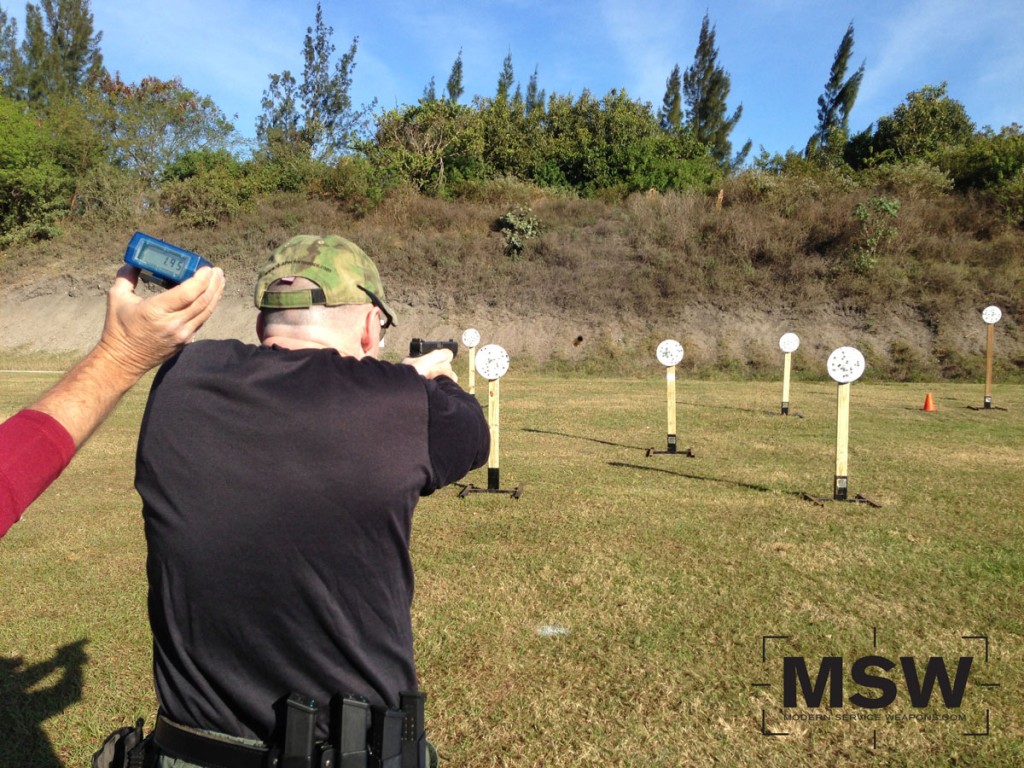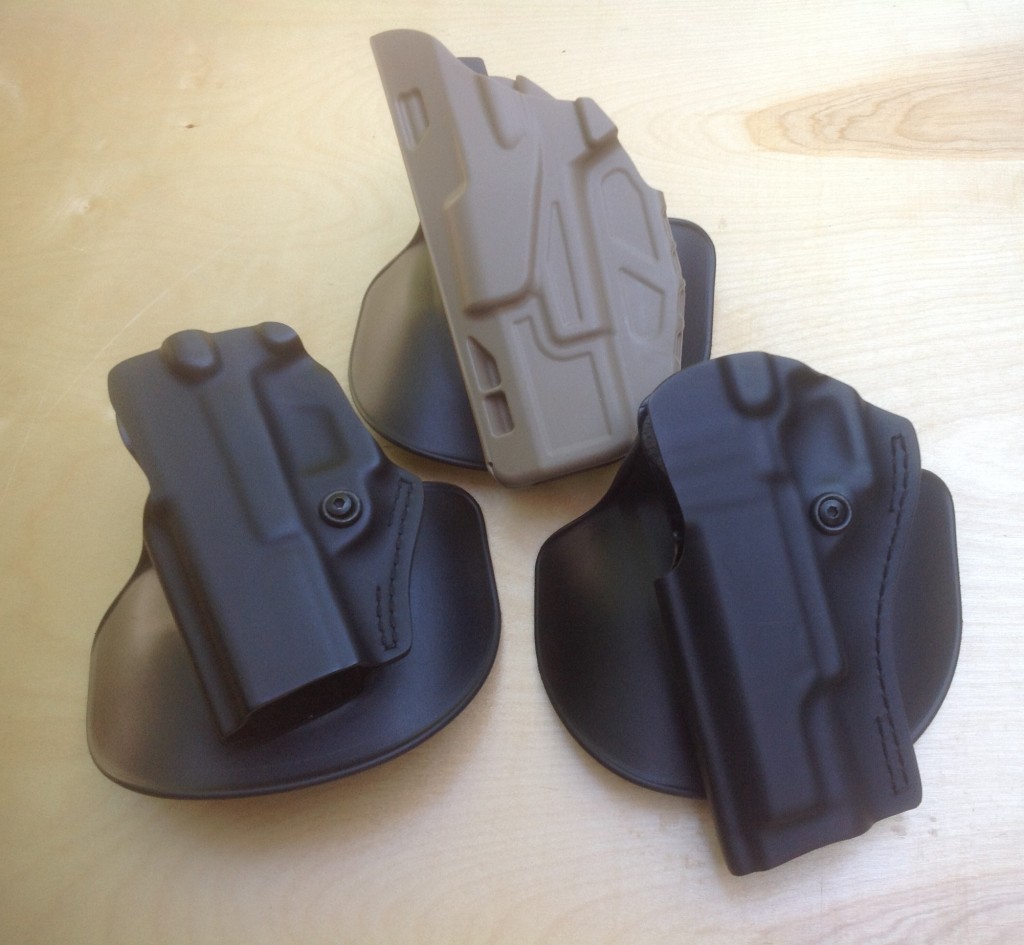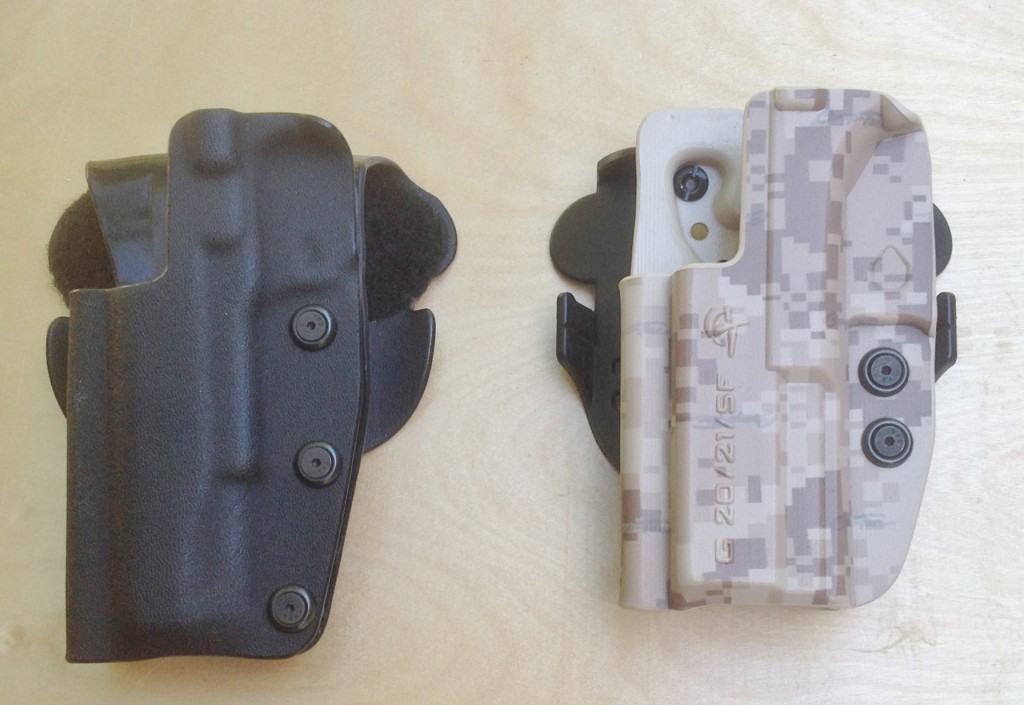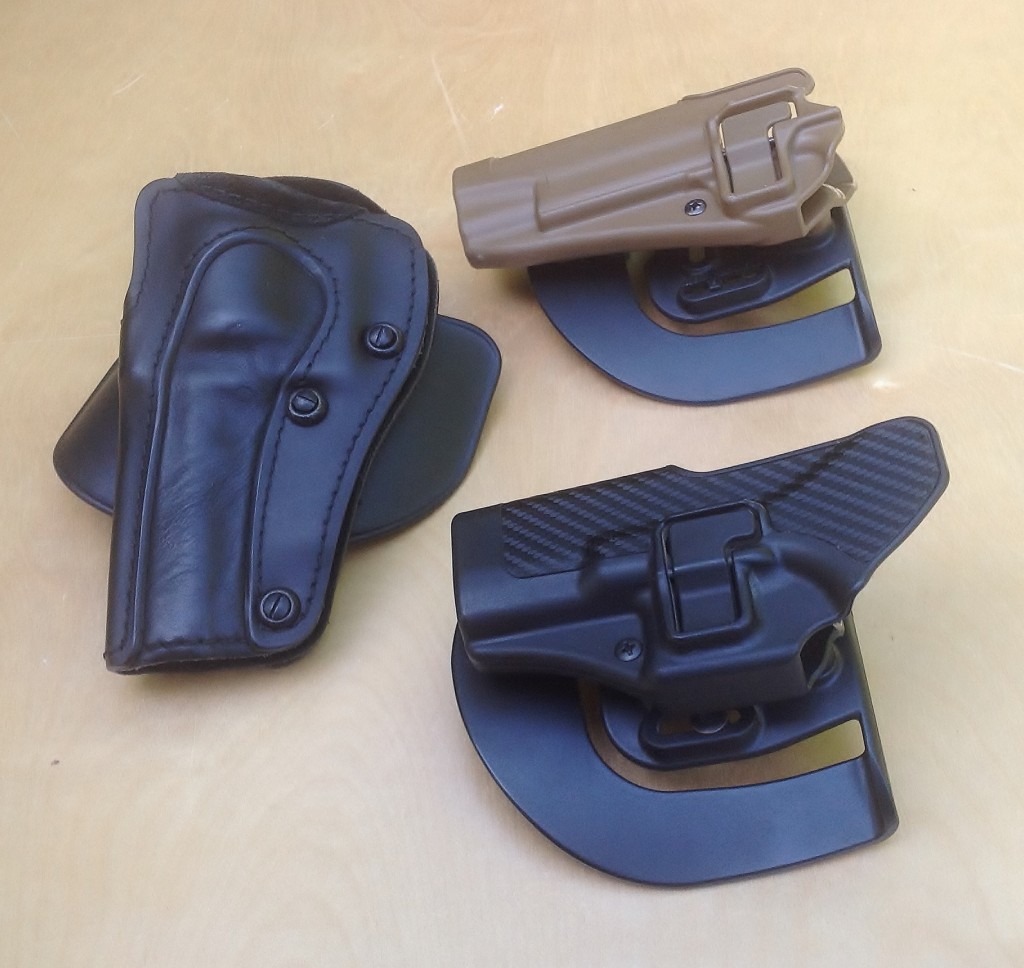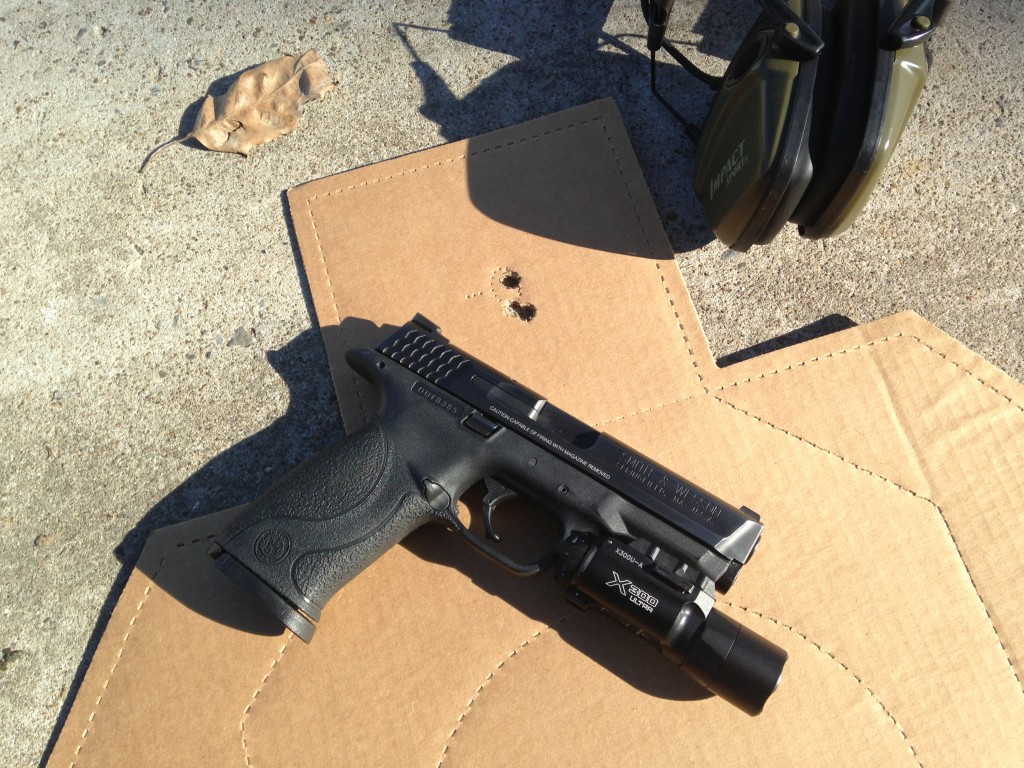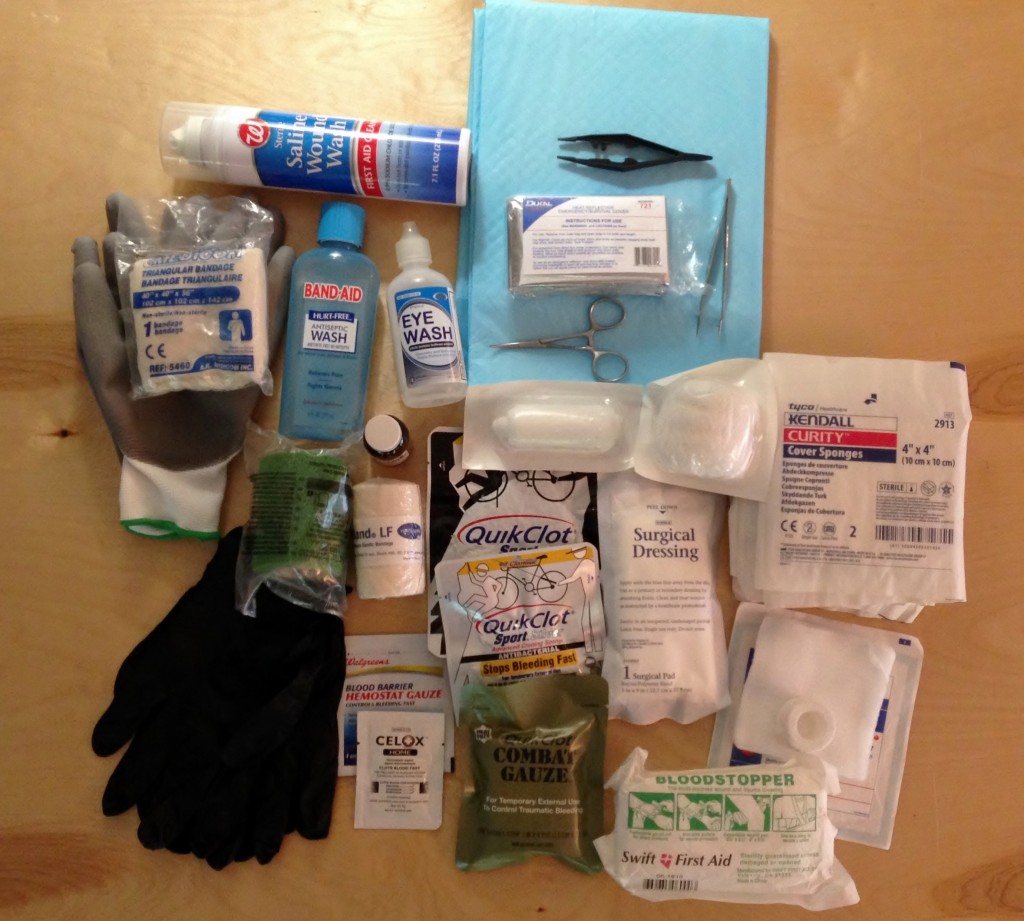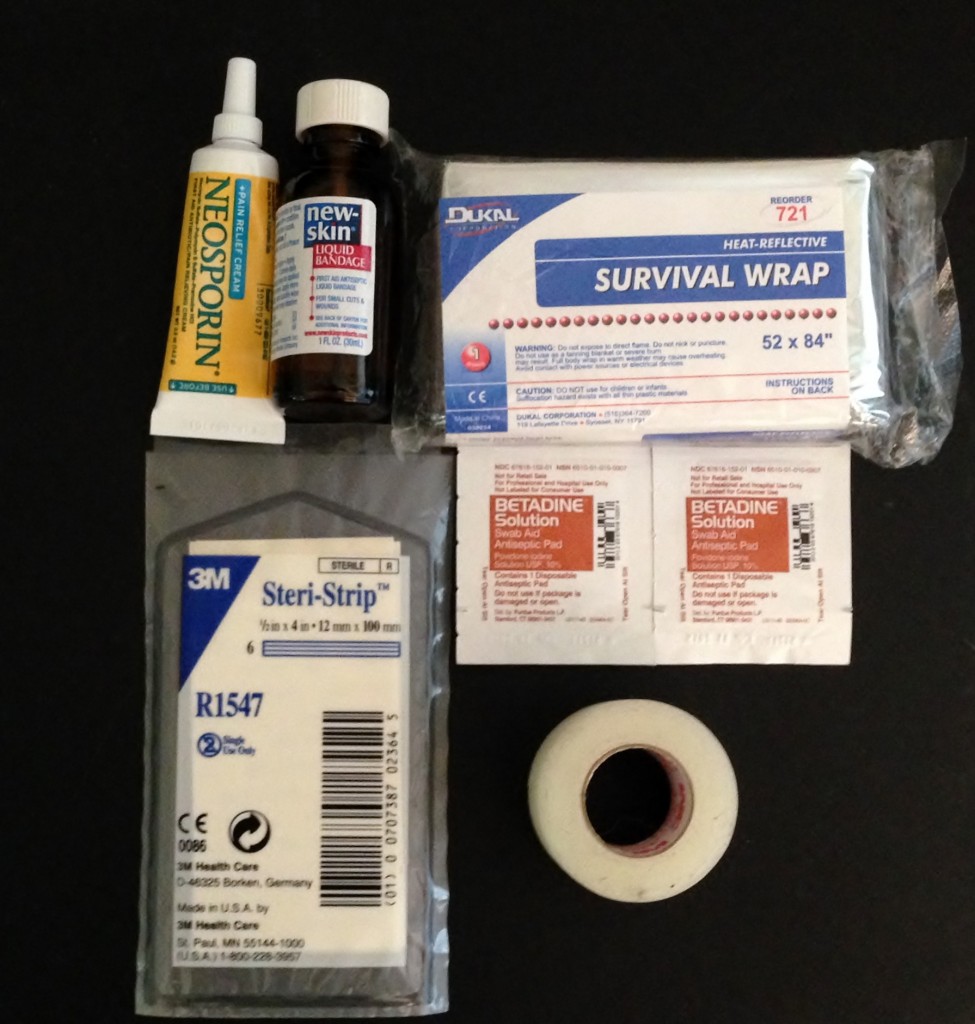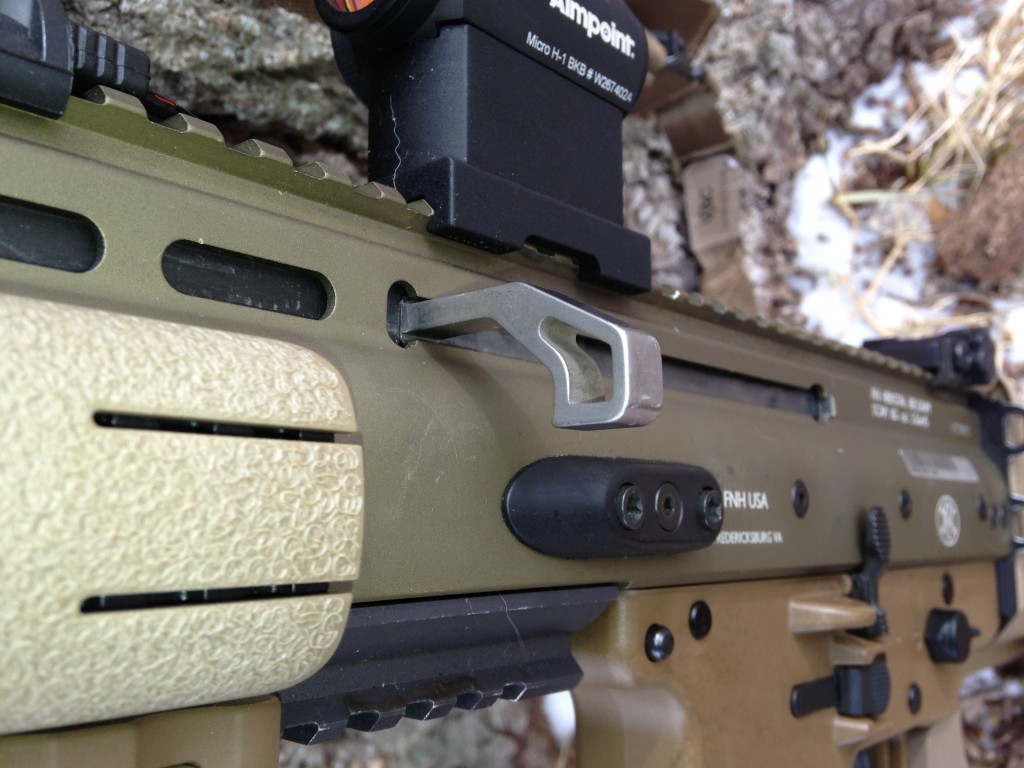The question is not meant to have a definitive answer. The answer will depend on your own use and experience. I wish only to offer some thoughts on the matter. The arguments on the thumbs down side usually lean towards users not wanting to have any obstacles to overcome when they need to fire in whatever high stress scenario they can imagine. The arguments on the thumbs up side tend to lean towards the user desiring some additional layer of protection from an unauthorized user being able to fire, and either thwarting their attempt completely or merely giving the owner time to react to the attempt. Being that this article is being presented on Modern Service Weapons, my thoughts are geared towards those who use pistols as just that, service weapons. Continue reading
Robar/10-8/MSW/Glock 17 Revisited
With the recent attention and series of articles on modified polymer pistols, I thought revisiting my Robar/10-8/MSW/Glock was in order. As the recent series of evaluations have highlighted, extensive modifications to polymer pistols are usually a want to do, rather than a have to do, decision. Having said that, as I stated in my previous evaluations modifying your pistol to best suit you and to ensure it’s 100% reliability falls squarely into the have to do category. Continue reading
NICE KNIFE . . . BUT IS IT LEGAL?
I used to cut out magazine articles and advertisements from in flight magazines with a large pocket knife in full view of other passengers and the airliner’s crew. That was decades ago. Pocket knives are no longer considered a gentleman’s tool; they are weapons subject to detailed criminal laws.
Ask someone who regularly carries a handgun about their home state’s law on open or concealed carry, about the law of a neighboring state, or the law in states where they travel regularly. They likely know the law fairly well. Now, ask them about the folding knife hiding behind their exposed pocket clip. It is likely they either do not know their state’s law on knifes, or if they know something, it is incorrect or incomplete. LEOs believe (mostly incorrectly) that some Federal or state law exempts them from limitations applicable to ordinary citizens.
Knife laws vary state to state, and can be more complicated than one might suspect. Federal law on domestic or imported automatic-opening (commonly referred to as “switchblade”) knives? Less likely to be known correctly. How about fixed knives carried on the belt in a sheath? Carrying a knife on an Indian reservation? On Federal land other than the District of Columbia? Blades concealed in belt buckle or otherwise disguised? Carry based on a concealed weapon/firearm permit/license? In a reciprocity state? When in interstate travel? Continue reading
1911 Maintenance: The Plunger Tube
One of the potential weak points on a 1911 pistol is the plunger tube. Shortfalls in either materials or workmanship (usually workmanship) can lead to the plunger tube becoming loose in the frame, or even completely falling out of the frame. The latter tends not to happen, since the grip panel will usually hold it in place. Continue reading
Picture of the Day – The SIG P228
There was a time in law enforcement that the SIG Sauer P228 was the quintessential Fed gun. It was issued or authorized by many Federal agencies such as the FBI, and USSS. The P228 was a great handgun to carry for plain clothes assignment, as it has great balance, and could be shot very well. In modern days of plastic handgun, the P228 still has class. It truly is the benchmark of the classic SIG line.
Colt 1911 Dual Recoil Spring Test – Part 2
Some time ago Hilton contacted me to conduct an evaluation on Colt’s new Dual Recoil Spring Assembly for the 1911 pistol. For those of you who haven’t kept up with the various articles on this, Colt developed the dual recoil spring assembly at the request of the Marine Corps for the new M45 1911 Pistol. The reasoning behind the new spring is to extend service life to 8000 rounds between changes.
Review: Paul Liebenberg’s Gunsmithing the 1911
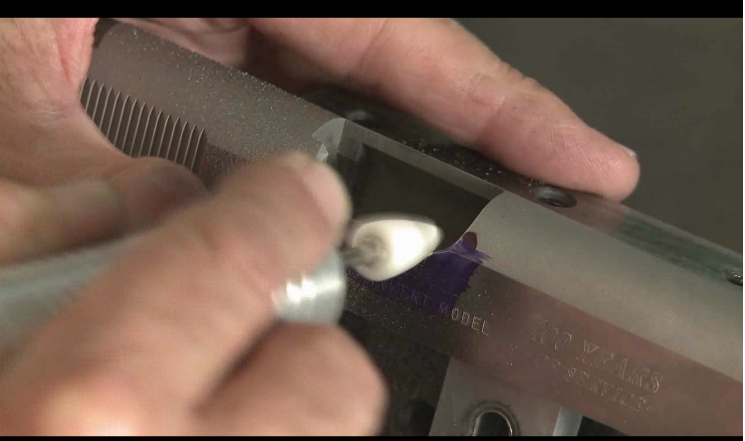 Any serious student of the 1911 knows the name Paul Liebenberg. He was innovating right there in the beginning, working as the manager for the Pachmayr Gun Shop in the 1980s. He founded the high end gunsmithing shop Pistol Dynamics, and also built high end customs in the renowned Smith & Wesson Performance Center. In his Panteao video series, Paul gives a ton of background on the 1911, custom modifications, and his approach to fitting barrels, installing safeties, reliability mods, and many other popular custom touches for the 1911. I watched this video and found it pretty informative and actually pretty entertaining. While the video won’t turn you into a 1911 gunsmith, it will give any 1911 fan some insight into what goes into building a high end, custom 1911 pistol.
Any serious student of the 1911 knows the name Paul Liebenberg. He was innovating right there in the beginning, working as the manager for the Pachmayr Gun Shop in the 1980s. He founded the high end gunsmithing shop Pistol Dynamics, and also built high end customs in the renowned Smith & Wesson Performance Center. In his Panteao video series, Paul gives a ton of background on the 1911, custom modifications, and his approach to fitting barrels, installing safeties, reliability mods, and many other popular custom touches for the 1911. I watched this video and found it pretty informative and actually pretty entertaining. While the video won’t turn you into a 1911 gunsmith, it will give any 1911 fan some insight into what goes into building a high end, custom 1911 pistol.
Here’s a preview:
Competition vs. the Tactical World
“Don’t go swimming after you just ate a meal”, “You’ll get sick if you go outside with wet hair” and of course, “shooting competition will get you killed!” (from the Tactical Bible..)
Axioms to live by..or maybe we need to use critical thinking to get past what easily could be described as sacred mumbo jumbo. Why? In this four part series I’m going to present an argument on why competition is good for the tactical soul. Continue reading
Fancy Machine Work Part 2
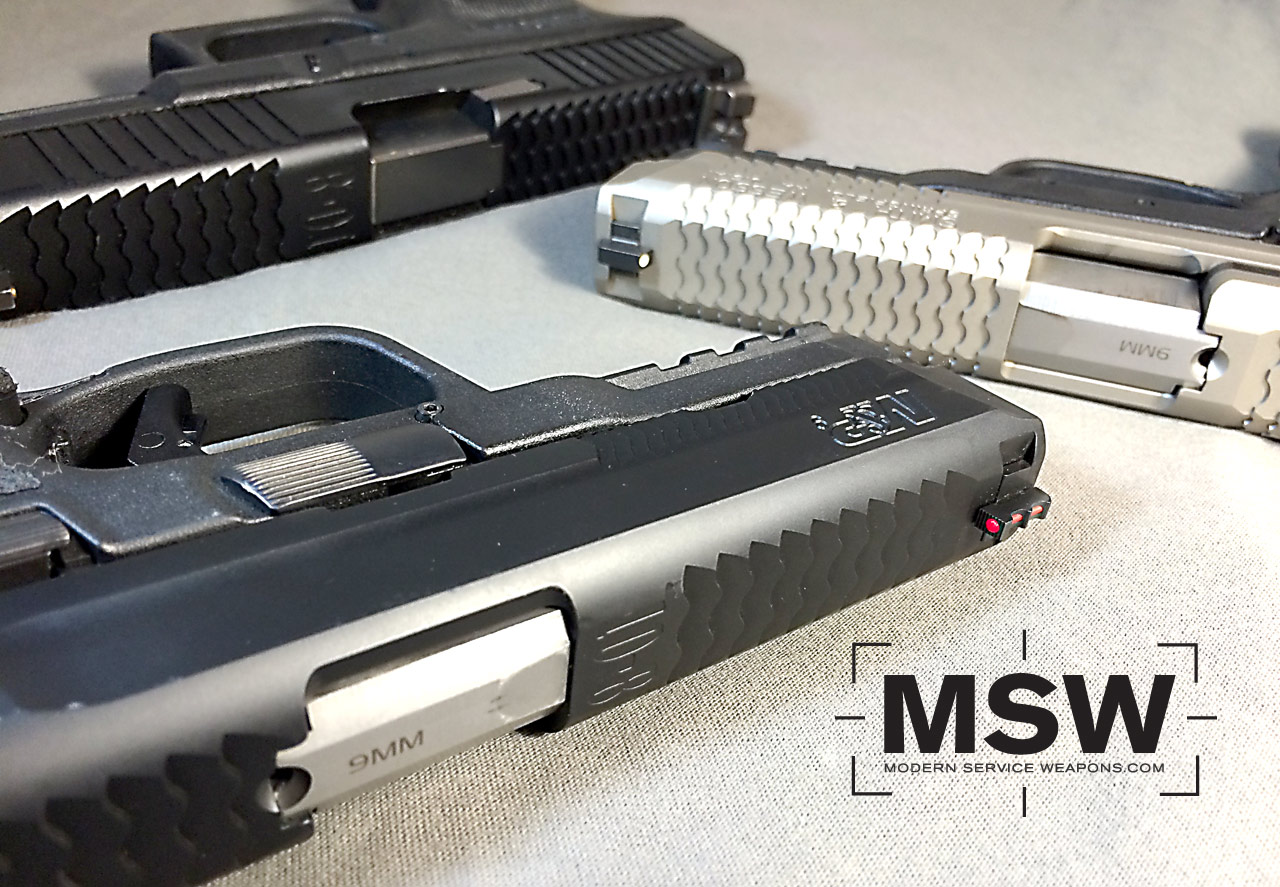 Hilton and I recently both wrote articles regarding the current popularity of custom machined slides on service weapons. Hilton reviewed the Innovative Gunfighter Solutions modified M&P Slide and I wrote about whether or not we needed the fancy work to begin with. Both of us agree that the extra serrations do add some utility. The added traction to aid in one handed (and some two handed) manipulation of the pistol is not lost upon us. However, we still got hate in the comments here and on Facebook about how important it is to have that added ability to rack the slide should one of your hands become otherwise occupied or incapacitated.
Hilton and I recently both wrote articles regarding the current popularity of custom machined slides on service weapons. Hilton reviewed the Innovative Gunfighter Solutions modified M&P Slide and I wrote about whether or not we needed the fancy work to begin with. Both of us agree that the extra serrations do add some utility. The added traction to aid in one handed (and some two handed) manipulation of the pistol is not lost upon us. However, we still got hate in the comments here and on Facebook about how important it is to have that added ability to rack the slide should one of your hands become otherwise occupied or incapacitated.
In Praise of the Paddle (Holster)
Many people who regularly carry a concealed handgun in street clothing find it necessary to take the weapon off and put it back on as part of their routine. Some IWB and OWB holsters accommodate that rather well with snap closures (when used with a perfectly matching belt). But, despite providing increased concealment and thus more choices in cover garment, not everyone likes an IWB holster, and the OWB snap closure holsters can be rather pricey and many of the sought-after makers have long turnaround time.
My approach has been to use the often maligned paddle holster. I have used paddle holsters for concealed carry, training classes, and competition. Naysayers usually have concerns with the paddle, including that it is bulky, does not provide a stable platform, comes loose on the draw, is susceptible to a “gun grab,” ruins trousers or underwear, or is uncomfortable when compared to an OWB belt holster. After some 20 years running numerous paddle holsters as well as OWB and IWB customs, the only meaningful drawback I have found with the paddle is the likely increase in “print” when carrying concealed. Many paddle holsters work well for belts of varying widths where a slotted OWB will not. (I use 1-1.75 inches wide belts). Continue reading
Spot Shooting- Aim Small, Hit Small
One of the concepts I embraced many years ago was the idea that shooters aim into a larger area on any given target than what they need. Although, the phrase “Aim Small, Miss Small” is a bit cliche, it applies to high speed marksmanship. A shooter who accepts what many are taught in the academy of “Center the sights in the middle of Center Mass and you’ll do OK” are setting themselves up for nothing short of disaster when stress enters into the equation. When you accept a broad target area, it tends to also give the shooter a corona of inaccuracy that is emotionally comforting to them as Linus was about his blanket. Continue reading
Tips for Successful Force on Force Training
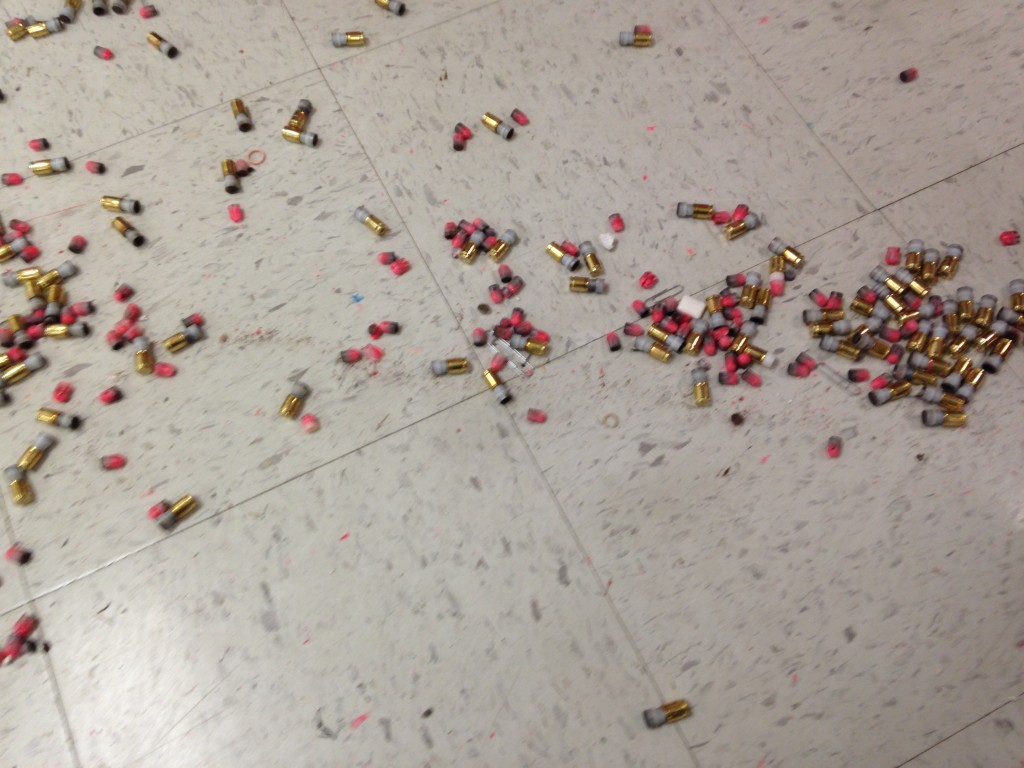 Force on Force is some of the most important training out there in my opinion. For those who carry a gun for defense or for work, it is the closest thing to the real thing going if done correctly. It also vets what we think will work in square range drills, against what happens against the living and breathing who shoot back. Continue reading
Force on Force is some of the most important training out there in my opinion. For those who carry a gun for defense or for work, it is the closest thing to the real thing going if done correctly. It also vets what we think will work in square range drills, against what happens against the living and breathing who shoot back. Continue reading
SHOOTING STEEL, DRAWING BLOOD
If you shoot nonreactive (fixed) steel targets regularly where frangible ammunition is not required (it rarely is) or the steel has been shot a great deal (it usually has), you likely have been hit by ricocheting bullet or jacket fragments. My experience suggests one is usually hit from the shots of others, and to a much lesser extent from reactive steel. (Ricochets also occur in indoor ranges when shooting paper targets, due to walls, floors, and metal objects downrange, or backstop integrity issues). Ricochets can be large, sharp, and travel at sufficient velocity to pierce skin and draw blood, sometimes even through a layer of clothing. A bullet or jacket fragment can become embedded in an open wound at skin level or deeper, and can cause most types of wounds; laceration, incision, avulsion, or puncture. A puncture wound (also referred to as penetrating trauma) is the type most likely to do damage beneath the skin and require professional medical attention even though superficial bleeding is stopped. I have seen each of those type wounds, and one likely arterial and two venous bleeds caused by fragment ricochets. Continue reading
First Look- The Apex Tactical FNH SCAR bolt handle
Now comes the “in the white” prototype of the new Apex Tactical Specialties line of bolt handles for the SCAR 16s/17s line of rifles.
The design was a request by some .mil customers who wanted a bolt handle that would clear all the optics they were issued. Based upon their needs, we developed a couple of versions designed specifically around the EoTech and Elcan. The above picture was decided as the best compromise for clearing the optics with gloves on, all the while giving positive control of the bolt handle. Some OpSpec students have been running these bolt handles for the last year in classes and we have over 15,000 rounds to test for wear and issues.
The yet to be named project should be to market around the NRA show, or slightly before.
Stay tuned!
Bushnell Elite Tactical – ERS
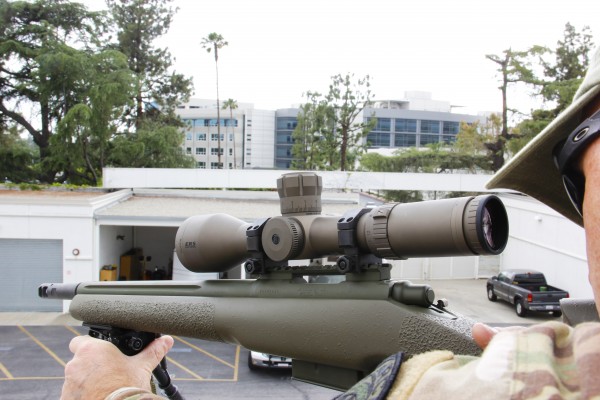 Riflescope, glass or precision optic; there are just as many terms for the tubular magnifiers that sit atop your prized weapons as there are manufacturers and options for these pricey items. Quite a few have come and gone throughout my locker over the years, but a handful have stayed based on use, repeatability, glass quality and overall ruggedness. The few hours I had at SHOT this year I was talking with Darryl Bolke about optics and he said I needed to see the new offerings from Bushnell. Evidently the look on my face made Darryl respond with, “Seriously, you need to believe me on this one.” Hearing that from a trusted friend, I followed and we met the Director of Military and Law Enforcement Sales, Tom Fuller. An hour later, with an exchange of business cards, I had arranged for two of their new production scopes to be sent my direction when they came off the line. Continue reading
Riflescope, glass or precision optic; there are just as many terms for the tubular magnifiers that sit atop your prized weapons as there are manufacturers and options for these pricey items. Quite a few have come and gone throughout my locker over the years, but a handful have stayed based on use, repeatability, glass quality and overall ruggedness. The few hours I had at SHOT this year I was talking with Darryl Bolke about optics and he said I needed to see the new offerings from Bushnell. Evidently the look on my face made Darryl respond with, “Seriously, you need to believe me on this one.” Hearing that from a trusted friend, I followed and we met the Director of Military and Law Enforcement Sales, Tom Fuller. An hour later, with an exchange of business cards, I had arranged for two of their new production scopes to be sent my direction when they came off the line. Continue reading



